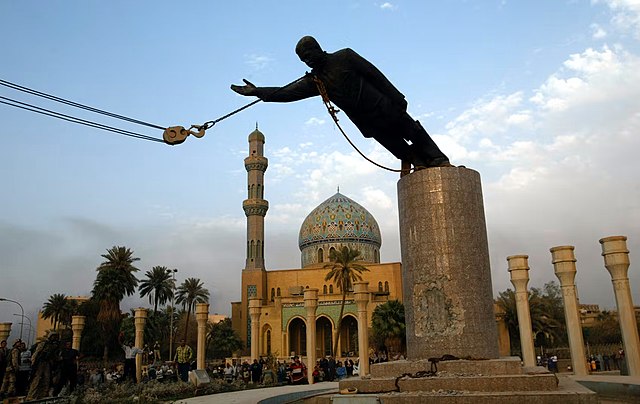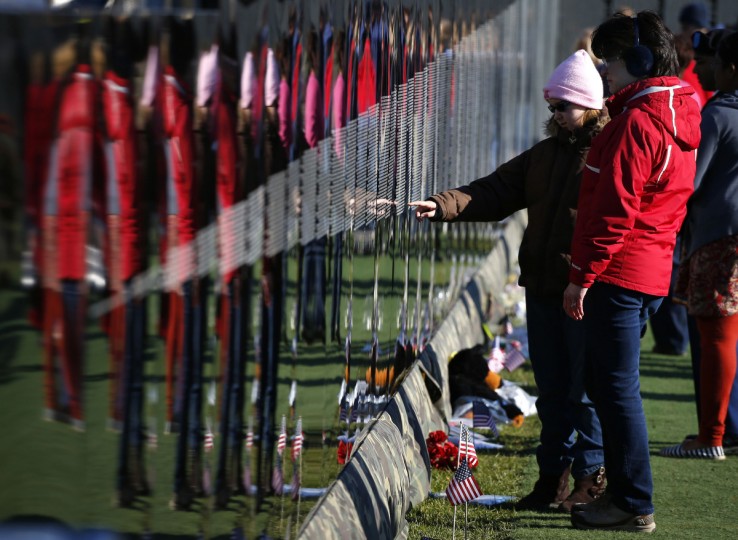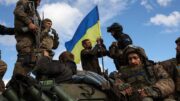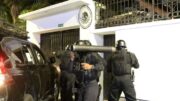It has been twenty years since US forces invaded Iraq in March 2003, marking the beginning of a new “forever war.” The US’ declared goal was to depose the country’s leader, Saddam Hussein, who had invaded neighboring Kuwait and oppressed various minority religious and ethnic groups in Iraq, including the Kurds and people of the Baha’i faith. In his March 2003 war ultimatum speech, however, then-President George W. Bush highlighted the weapons of mass destruction (WMDs) he claimed Hussein’s regime had “already used…against Iraq’s neighbors and against Iraq’s people” and the regime’s role in “aid[ing], train[ing] and harbor[ing] terrorists, including operatives of al Qaeda” as having inspired the upcoming war.
When Bush addressed the American public, the US was still reeling from the September 11th, 2001, attacks on the World Trade Center and Pentagon, as well as the deaths caused by a failed third attack. Although Bush had not directly linked Iraqi leaders to the 9/11 attacks, in October of 2002, the year before the invasion and Bush’s speech, the Pew Research Center found that the majority of Americans—66%—nonetheless believed that “Saddam Hussein helped the terrorists in the September 11th attacks.” By contrast, only 21% thought that Hussein “was not involved in the 9/11 terrorist attacks,” while 13% were unsure whether Hussein had played a part.
Other Bush administration officials were not as quick to dismiss the possibility of Iraqi leadership’s involvement in the 9/11 attacks. Bush’s denial that the White House had evidence of a connection between Hussein and the perpetrators of 9/11 only came as a response to his vice president, Dick Cheney, who had suggested that “at least some in the administration still considered the issue to be open,” according to NBC.
Still, regardless of whether he had unambiguously associated Hussein with the perpetrators of 9/11, Bush repeatedly claimed that Hussein had “nuclear arms or a full arsenal of biological weapons” that would allow him to “resume his ambitions of conquest in the Middle East and create deadly havoc in that region” as well as, it was implied, in the US. According to Bush, “the dictator of Iraq is not disarming” as required more than 10 years earlier by the United Nations (UN). “To the contrary, he is deceiving.”
Bush continued, “This Congress and the American people must recognize another threat. Evidence from intelligence sources, secret communications and statements by people now in custody reveal that Saddam Hussein aids and protects terrorists, including members of Al Qaida,” the group behind the 9/11 attacks. Even if he would not condemn Hussein as having been in part responsible for 9/11, Bush emphasized the Iraqi leader’s supposed connection with the established culprit of the attacks.
While Iraq is known to have supported extremist groups such as the anti-Western and anti-Israel Abu Nidal Organization, according to the Council on Foreign Relations, “convincing proof of an Iraq-al-Qaeda link remained lacking” following Hussein’s fall.
Still, as American anger towards Iraq mounted, stoked by the Bush administration’s rhetoric, Congress authorized the US to use military force against the country. In addition to Iraq’s “continuing to possess and develop a significant chemical and biological weapons capability [and] actively seeking a nuclear weapons capability,” the bill explicitly connected al-Qaida and Iraq, saying that “members of al Qaida…are known to be in Iraq.” Further, the White House used the 9/11 attacks as a reason to fear Iraq’s unlikely possession of nuclear weapons: “The attacks on the United States of September 11, 2001, underscored the gravity of the threat posed by the acquisition of weapons of mass destruction by international terrorist organizations,” such as the Iraqi branch of al-Qaida.
Two years later, in 2004, former US weapons inspector David Kay testified before the Senate Armed Services Committee, saying that while “the best evidence [he] had seen was that Iraq indeed had weapons of mass destruction,” it turned out that he and other top officials holding the same belief “were almost all wrong.”
Kay claimed the Bush administration’s false assertions were not made because “analysts were pressured to reach conclusions that would fit the political agenda of one or another administration” but because of the “honest difficulty based on…the information that had been collected.”
Regardless of why Bush and other administration officials pushed the story that Iraq was in possession of WMDs, the narrative bolstered support for the war, which began with the March 19th, 2003, launch of Operation Iraqi Freedom. Just two months before the war, 66% of Americans “favored US military action in Iraq to end Saddam Hussein’s rule,” according to the Pew Research Center.
The initial phase of the war was brief: Less than a month after Operation Iraqi Freedom was announced, on April 9th, 2003, US, UK, Australian, and Polish forces overwhelmed the Iraqi army, proceeding to iconically topple the statue of Hussein in Baghdad’s Firdos Square. Hussein himself had gone into hiding.
On May 1st of the same year, then-President Bush gave his “Mission Accomplished” speech, announcing that “major combat operations in Iraq had ended.” Again referencing 9/11, he told Americans that “the Battle of Iraq is one victory in a war on terror that began on September the 11th, 2001, and still goes on.” By deposing Hussein, coalition forces had “removed an ally of al-Qaida, and cut off a source of terrorist funding. And this much is certain: No terrorist network will gain weapons of mass destruction from the Iraqi regime, because the regime is no more.”
On December 13th, 2003, Hussein was captured by US forces. Having been charged with crimes including the invasion of Kuwait and genocide against the Kurds, he stood trial in Baghdad throughout 2005 and 2006. He was found guilty and sentenced to death by hanging, which took place on December 30th, 2006.
Meanwhile, insurgent activities were picking up in Iraq, with the 2003 disbanding of the Iraqi army having left hundreds of thousands of Iraqis well-armed and without organization. US forces remained in the country, launching efforts such as those in Fallujah. After sporadically striking the city from the air, US forces occupied Fallujah’s primary school, provoking civilian protests and resulting in violent exchanges between the Americans and the Iraqis. As the American-Iraqi conflict escalated, insurgents entered the picture as well, taking advantage of the instability to try to gain control of the city.
After Hussein fell, governmental power was shifted from the minority Sunni Muslims to the majority Shiites, with Kurds gaining their own autonomous region. For the first time, Iraq had a Shia prime minister and a Kurdish president. Sunnis maintained the position of parliamentary speaker but lost many of the powers they had previously enjoyed. The result was rising sectarian tensions, which were exploited by figures like Abu Musab al-Zarqawi, a Jordanian jihadi who led al-Qaida in Iraq and whose group was involved in the fighting in Fallujah.
Additionally, with the US-led Coalition Provincial Authority (CPA) overseeing the new Iraqi Governing Council government, members of Hussein’s socialist Ba’ath party were forbidden to hold office. In the party’s place, the CPA sought to enact market-related reforms intended to lift sanctions on and encourage direct foreign investment in Iraqi oil, the revenues from which were supposed to provide the funds needed for the country’s reconstruction as a free market democracy.
More than 30 years earlier, the Ba’ath party’s 1972 nationalization of oil had allowed Iraq to invest in infrastructure and human capital. According to the US Institute for Peace, Iraqi universities, for example, “flourished in the 1960s and 1970s” until they began to decline following a series of wars and Hussein’s rise to power. When the CPA then began to implement its deregulation and privatization measures, Iraqis were left without the structured—if corrupt, under Saddam Hussein—state upon which they relied.
As unemployment soared and security deteriorated, scandals such as US torture of prisoners at Abu Ghraib prison were brought to light. Pictures taken at Abu Ghraib, a US Army detention center 20 miles west of Baghdad, show the rape and physical abuse of Iraqi prisoners of war at the hands of US jailers.
With US-created instability in Iraq having created an opening for the insurgents—the threat of whom the US had initially entered Iraq to curb—the US deployed additional troops to Iraq. Between 2007 and 2011, the 130,000 troops that had already entered the country were joined by an additional 30,000.
Bush sent these troops to Iraq despite increasing American disapproval of the war. As the Pew Research Center writes, “by January 2007, with the situation on the ground deteriorating, Bush defied growing calls from Democrats to withdraw U.S. forces from Iraq and instead announced that he was sending more troops to the country.” This “New Way Forward” was met with the approval of only 31% of Americans.
Iraqi opinion of US intervention was falling as well. In November of 2005, a polling effort conducted by international news and research agencies found that 67% of Iraqis thought life was improving in November 2005, but by March 2007, only 35% said the same.
According to CNN, US forces deployed under the New Way Forward reduced civilian deaths from 4,000 per month in January 2007 to 500 per month in May of the same year. However, Brown University’s Watson Institute of International and Public Affairs notes that “not all war-related deaths have been recorded accurately by the Iraqi government and the U.S.-led coalition.” The Watson Institute estimates that roughly 300,000 Iraqi civilians have been killed, as of March 2023, since the beginning of the war in Iraq, though “the actual number of civilians killed by direct and indirect war violence is unknown but likely much higher.”
With approximately 100,000 troops remaining in the country, during his 2008 presidential campaign, future President Barack Obama promised to end the war in Iraq, saying that the US “would be as careful getting out of Iraq as we were careless getting in.” Three years later, in office in 2011, Obama saw “all but a handful” of US troops—and all combat troops—withdrawn from Iraq and the US flag of command lowered from its position over Baghdad. 75% of Americans approved of the withdrawal.
In 2014, however, with the rise of the Islamic State of Iraq and Syria (ISIS), Obama began to target the extremist group via drone strikes in both Iraq and Syria. The US and coalition partners also reinitiated previous efforts to train and advise Iraq’s military.
While in 2011, prior to US withdrawal, 56% of Americans believed that the US had “mostly succeeded” in achieving its goals in Iraq, seven years later, in 2018, only 39% made the same conclusion. More than half—53%—said the US had “failed to achieve its goals” in the country.
In 2023, roughly 2500 US troops remain in Iraq, continuing the “train and advise” mission begun by Obama. Though, US troops are now more concerned with containing Iraq’s neighboring Iran than managing affairs in Iraq itself. US presence poses challenges to Iranian forces attempting to move weapons across Iraq and Syria into Lebanon, whose anti-Israel groups aim to use them against their southern, US-backed neighbor.
On March 29th, the Senate voted 66-30 to repeal the legislation that initially authorized the US to enter the Iraq War and the earlier 1991 Gulf War from which many of the issues that prompted the Iraq War stemmed.
NPR writes that “the action is largely symbolic as the U.S. combat operations against Iraq ended more than a decade ago, and if enacted, the repeals would have no effect on any ongoing military operations.”






Be the first to comment on "20 Years After Iraq"